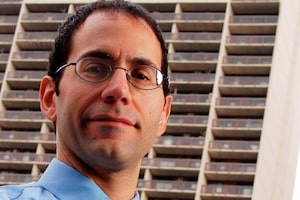photos.com
Investors love investments that churn out cash.
This desire is likely to strengthen with age - a fact not lost on the investment industry. Accordingly, the industry has created numerous products that kick out generous amounts of cash each month.
But many of these popular monthly income funds pay out more than is likely to be sustainable over the long term. If you spend your cash distributions, pay attention as I illustrate a four-step process for testing distribution sustainability. The popular BMO Monthly Income Fund is our guinea pig for this exercise and exemplifies the situation of many income funds.
Calculate the total return requirement
The first goal is to figure out the total return, before fees, required to at least support the fund's monthly distribution. You'll need three pieces of information - your fund's management expense ratio (MER), the current distribution rate and your fund's current market price - which you can then plug into the following formula: (monthly distribution x 12) / unit price + MER.
BMO Monthly Income pays a monthly distribution of 6 cents per unit, had a recent closing unit price of $8.029 and sports a MER of 1.51 per cent annually. So, this fund needs to generate a total return of 10.48 per cent annually to keep paying its distribution without further eating into capital.
Total returns in excess of 10.48 per cent annually will see the fund's unit price rise and continue paying the distribution. If performance is below this level, the generous cash payouts will gradually eat into the unit price.
Calculate the return contribution of bonds
A bond's yield-to-maturity (YTM) is a very good estimate of how it will perform over its term. Some fund companies provide YTM for their bond portfolios, either online or upon request. I estimated the YTM of BMO Monthly Income Fund's bond holdings at 3.74 per cent a year. Since 49.7 per cent of the fund is invested in bonds, they will contribute 1.86 per cent annually to the total portfolio.
I calculated this using our second formula: (bonds' YTM) x (percentage held in bonds) for the BMO Monthly Income's bonds.
Back out the return required from stocks
If you're still awake, let's review. Our calculations estimate that BMO Monthly Income's bonds will kick in 1.86 per cent of the 10.48-per-cent total return (before fees) required to sustain its distribution longer-term. From that, we can calculate how much the stock side of this fund will need to generate.
For BMO Monthly Income, the stock side of its portfolio must make up the difference of 8.62 per cent annually. That sounds achievable until you realize that stocks only make up half of the portfolio. Once we divide that 8.62 per cent by this fund's 50.3-per-cent allocation to stocks, we arrive at 17.14 per cent annually, using the following formula:
Return contribution needed from stocks = (total return required - return contribution of bonds) / percentage allocation to stocks.
In order to generate a sufficient return to keep up this fund's distribution without further eroding capital, the portfolio managers will have to generate a hefty return of 17.14 per cent per year from the fund's stock component.
Assess sustainability
The sustainability of a fund's distribution should become clearer after completing the above three calculations. Nobody knows what the future holds. But in the case of BMO Monthly Income, I'm willing to bet that its portfolio managers - no matter how talented - will not be able to sustain such a high level of stock performance.
The BMO fund isn't alone; many others sport similar figures. If you're spending those fat monthly distributions, start spending less of them now in case the payout is cut in the future to a more sustainable level.
Since I first wrote about funds with unsustainable payouts nearly 10 years ago, several income funds have adopted more reasonable distribution policies. But if you spend your income fund's monthly payout, it's worth your time to repeat the above process to make sure you know the extent to which you're spending your capital.
Dan Hallett, CFA, CFP is director, asset management for Oakville, Ont.-based HighView Financial Group and contributor to thewealthsteward.com
 Dan Hallett
Dan Hallett